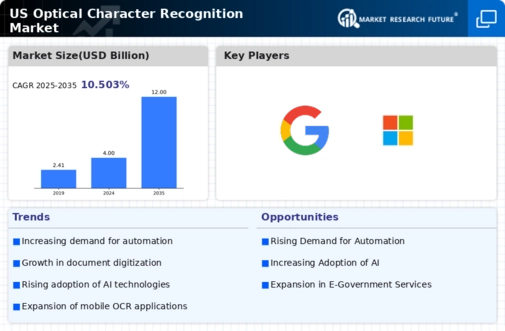US Optical Character Recognition Market Summary
The US Optical Character Recognition market is projected to grow from 4 USD Billion in 2024 to 12 USD Billion by 2035, reflecting a robust growth trajectory.
Key Market Trends & Highlights
US Optical Character Recognition Key Trends and Highlights
- The market is expected to experience a compound annual growth rate of 10.5 percent from 2025 to 2035.
- By 2035, the market valuation is anticipated to reach 12 USD Billion, indicating substantial growth potential.
- In 2024, the market is valued at 4 USD Billion, laying a solid foundation for future expansion.
- Growing adoption of Optical Character Recognition technology due to increasing demand for automation in data entry is a major market driver.
Market Size & Forecast
| 2024 Market Size | 4 (USD Billion) |
| 2035 Market Size | 12 (USD Billion) |
| CAGR (2025-2035) | 10.5% |
Major Players
OmniPage, ABBYY, Adobe, Google, Microsoft, Kofax, Amazon Web Services













Leave a Comment